One of Chile's prized foods, sopaipillas, should not be served alone; try it with avocado, pebre, and jams.
Chilean sopaipillas are a traditional fried dough snack. They are popular street food; you can eat them at festivals, markets, and restaurants nationwide.
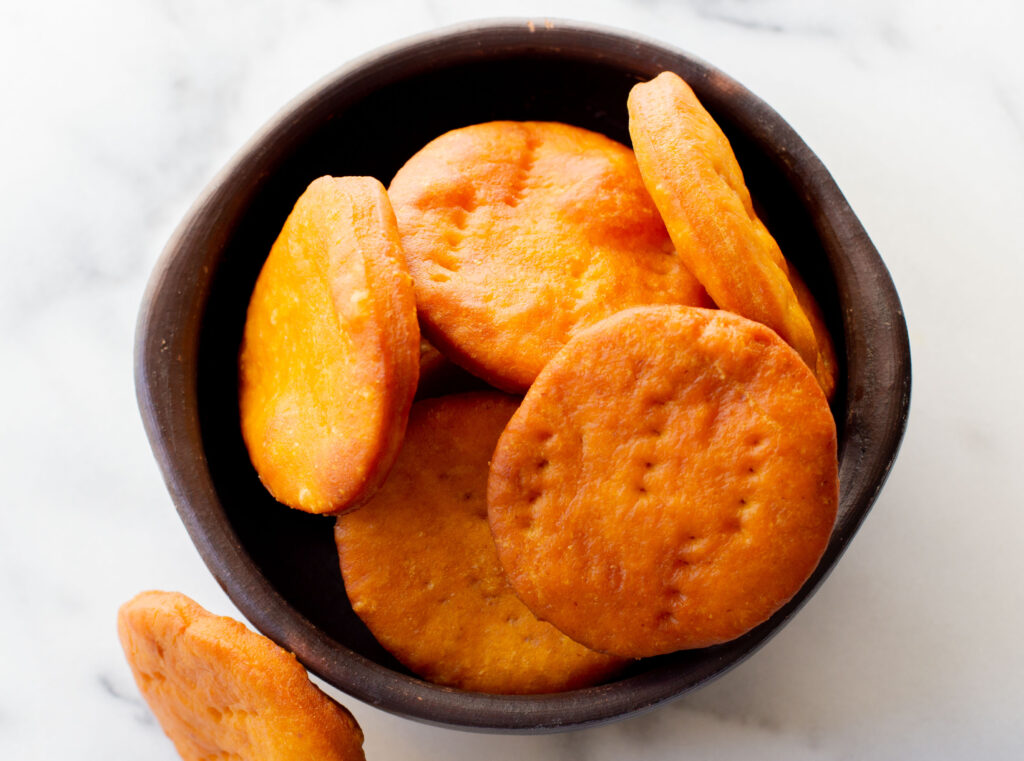 Sopaipillas start with a simple dough mix of flour, squash, baking powder, and salt. The dough is then flattened into a round shape and fried in hot oil until golden brown and crispy outside.
Sopaipillas start with a simple dough mix of flour, squash, baking powder, and salt. The dough is then flattened into a round shape and fried in hot oil until golden brown and crispy outside.
One distinctive feature of Chilean sopaipillas is the addition of pumpkin or squash to the dough, which gives them a slightly sweet flavor and a moist, tender texture.
They are typically served hot, with a sprinkling of salt or powdered sugar, and sometimes with a drizzle of pebre, a mild salsa made from tomatoes, onions, cilantro, and chili peppers.
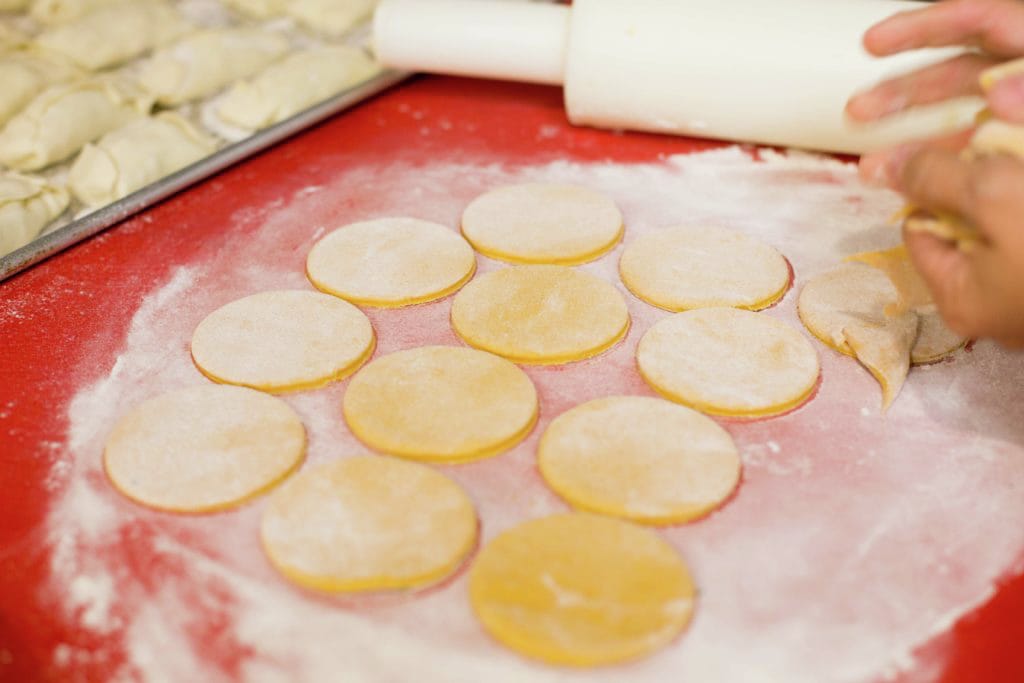 Chileans eat sopaipillas as a mid-afternoon snack or light meal, particularly during the colder months. Many families make them when it rains in the Central Valley. They are also a popular food during the country's Independence Day celebrations, which take place on September 18th.
Chileans eat sopaipillas as a mid-afternoon snack or light meal, particularly during the colder months. Many families make them when it rains in the Central Valley. They are also a popular food during the country's Independence Day celebrations, which take place on September 18th.
Overall, Chilean sopaipillas are a delicious and versatile snack loved by many in Chile and beyond.
It's important to note that Chilean Sopaipillas are different from Mexican Sopaipillas. The Chilean version includes squash and is eaten with savory or sweet sauces.
Print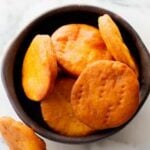
Chilean Sopaipillas with Pumpkin
- Prep Time: 30 minutes
- Cook Time: 15 minutes
- Total Time: 45 minutes
- Yield: 20
- Category: Savory
- Method: Fried
- Cuisine: Chilean
Description
Perfect appetizers with Chilean salsa Pebre or as a dessert, dusted with powdered sugar or in a molasses sauce.
Ingredients
- 1 cup pumpkin puree (I use canned Libby brand in the USA)
- 2 cups flour
- 2 teaspoons baking powder
- 1 teaspoon fine salt
- 3 tablespoons vegetable shortening, lard, or butter, melted
Instructions
- Place the flour, baking powder, and salt in the food processor and pulse a few times to mix. Add the remaining ingredients and pulse until a dough forms. It should be smooth and pliable.
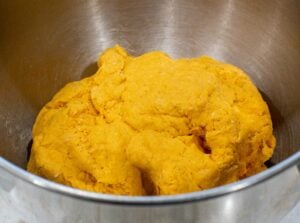
- Take it out of the food processor and knead it several times. Let stand, cover with a cloth, for 20 minutes.
- Roll into a floured counter until the desired thickness; I prefer thin, ½ cm. more or less or ¼'. Pierce each sopaipilla with a fork a couple of times.
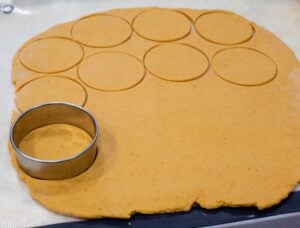
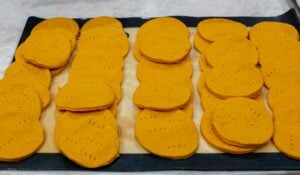
- Heat oil to 180C or 350F.
- Fry for 1-2 minutes per side. They should be golden brown.
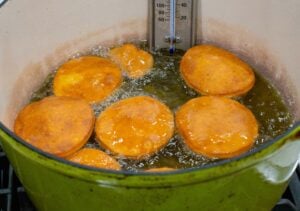
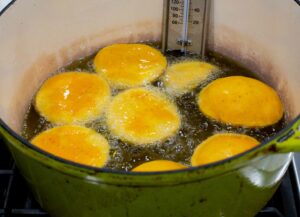
- Remove to a plate lined with a paper towel to absorb excess oil.
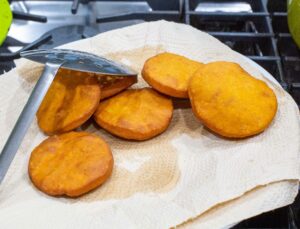
- Serve hot.
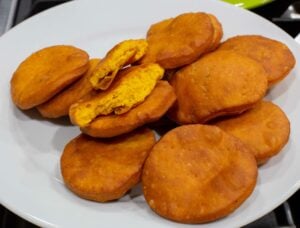
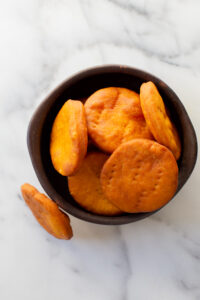
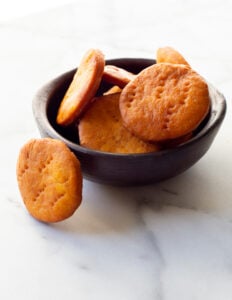
Notes
For the Chancaca sauce: 1 square of Chancaca or Panela or Piloncillo, 2 cups of water, lemon or orange peel 2 little squares, 1 cinnamon stick, 3 cloves, and 2 tablespoons cornstarch dissolved in ¼ cup cold water
Place the water, panela, orange peel, cinnamon and cloves in a medium saucepan. Cook over medium heat stirring occasionally until brown sugar is melted. Boil gently for 15 minutes.
If you want it thicker, add the cornstarch dissolved in cold water and stir until thickened.
You can drizzle the sopaipillas with sauce or soak into the sauce and serve warm.
Nutrition
- Serving Size:
- Calories: 162
- Sugar: 0.4 g
- Sodium: 131.7 mg
- Fat: 12.8 g
- Saturated Fat: 2.2 g
- Carbohydrates: 11 g
- Fiber: 0.7 g
- Protein: 1.4 g
"Sopaipillas Pasadas" is a clever dessert that allows you to use any leftover sopaipillas. Sopaipillas are dipped or soaked in a warm, thick molasses sauce. In Chile, we use Chancaca.
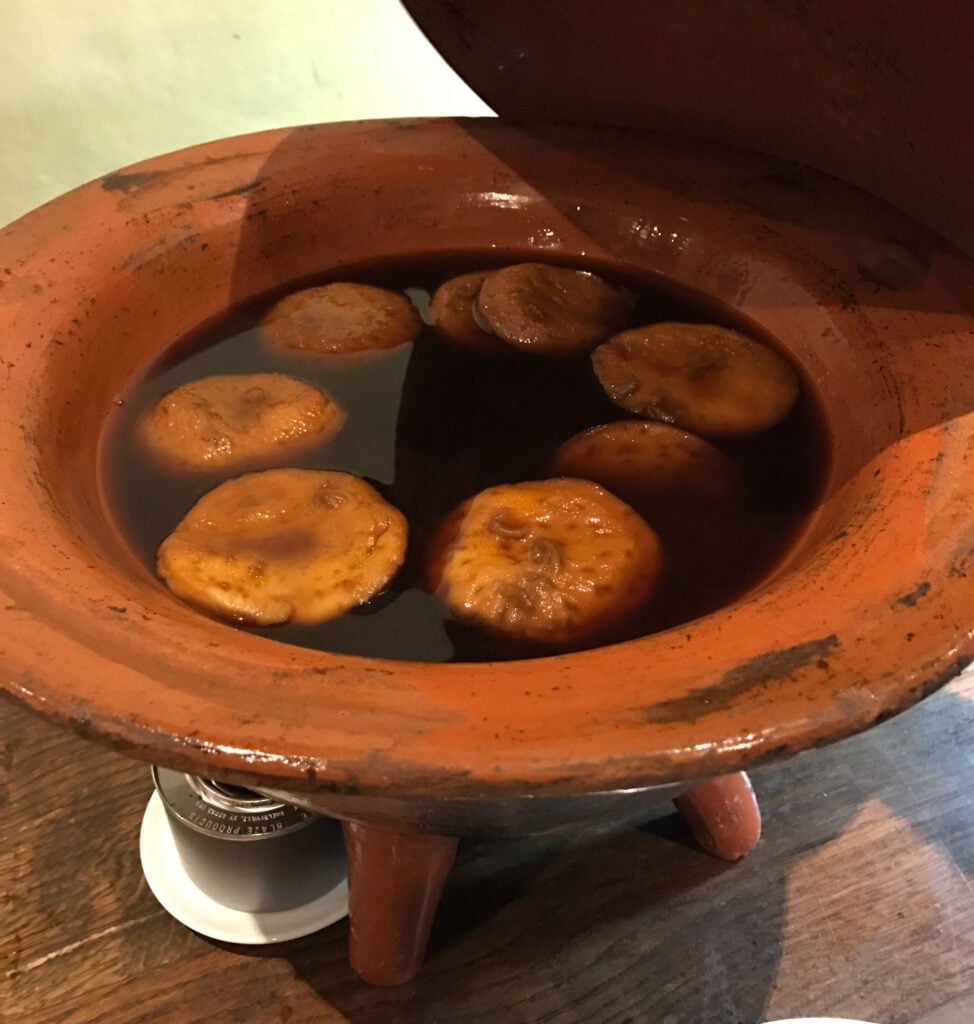
If you don't have Chancaca or Panela to make the sauce for Sopaipillas Pasadas you can use dark molasses blackstrap. It's always made to taste.
Start with ½ cup of dark molasses, dissolve in 2 cups water, and add sugar and orange peel. Cook to boil, taste, and adjust. Add one teaspoon of cornstarch dissolved in 1 tablespoon of cold water to thicken when you are happy with the taste. Let it boil. Don't use brown sugar.
Tips for delicious sopaipillas:
Can I make the sopaipillas in the oven?
Yes, you can, but frankly, it is NOT the same. I think baked sopaipillas work better for sopaipillas pasadas, but it is better to fry them to eat them fresh.
How do I make the pumpkin puree?
In the US, to replace the traditional Zapallo Amarillo (Chilean winter squash), use Kabocha or Hubbard squash; even Halloween pumpkins can be used successfully.
Baking or cooking the pumpkin or winter squash in the microwave without water is best. It's ready when you can go through with a table knife without resistance. The purée is the pumpkin passed through a sieve or ground with the stick blender or in the blender. It is better to let it cool before grinding, and you can freeze it in portions for when you want to make sopaipillas again. It lasts three months frozen.
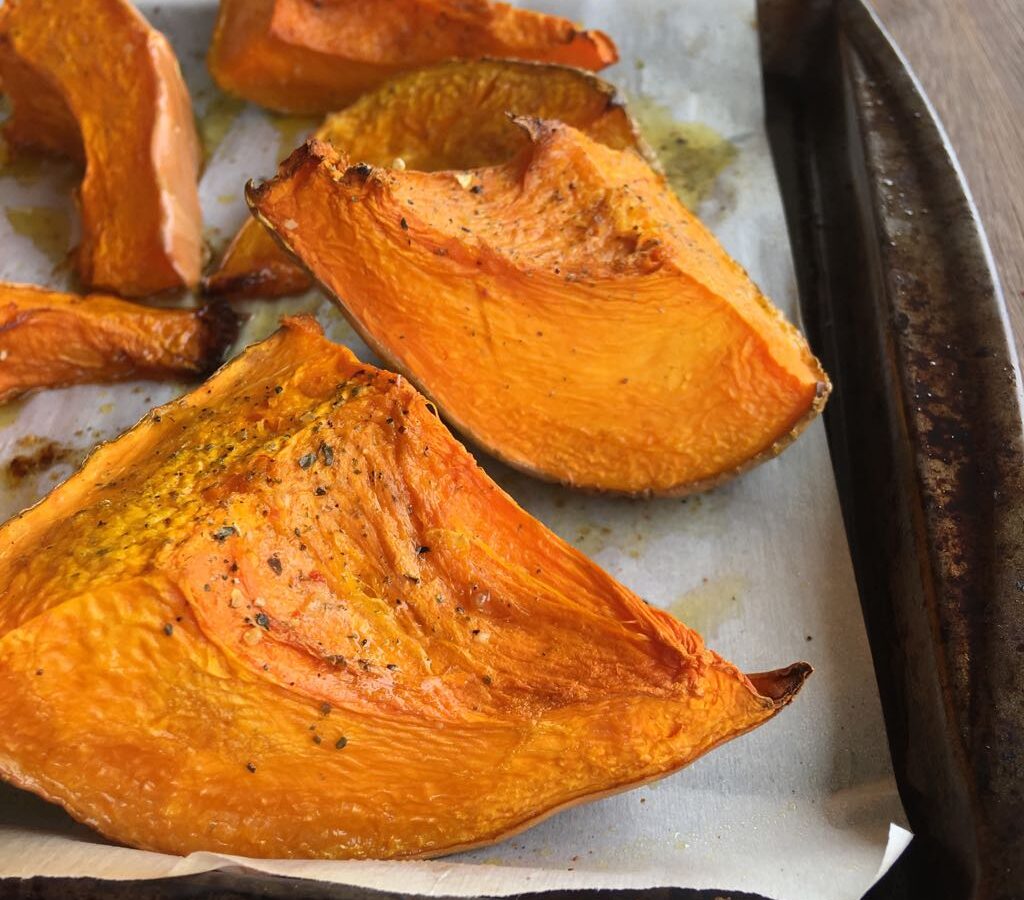
I made sopaipillas, but they were hard. What did I do wrong?
There are two possibilities: too much kneading. Kneading develops the gluten of the flour and can result in hard sopaipillas. Or the baking powder is expired. If you suspect the baking powder is expired, place a teaspoon in a cup and add boiling water. It should bubble a lot for at least 30 seconds.
How do you measure flour?
Use measuring cups: 1 cup = 240 ml.
A cup of flour is 125-140 grams.
Visit also: Corn and Beef Pie (Pastel de Choclo)
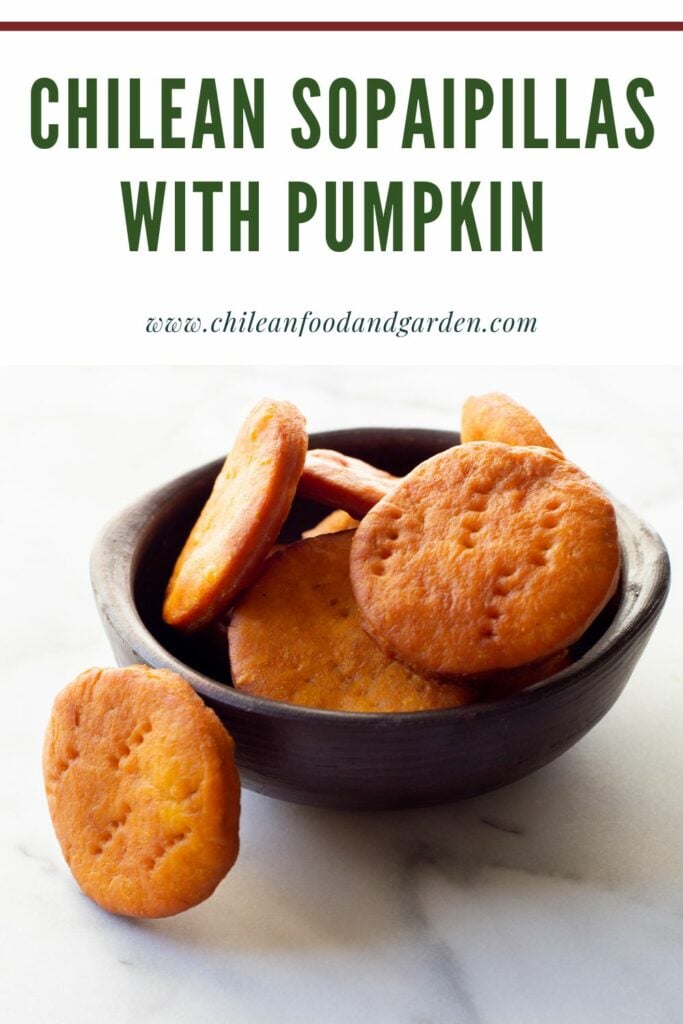

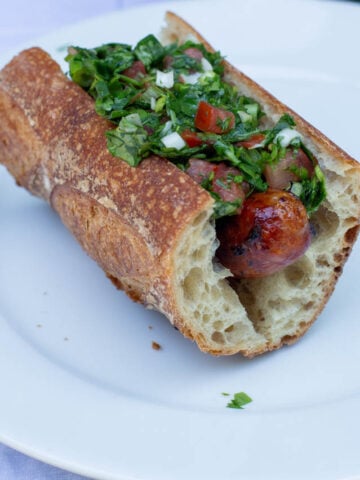
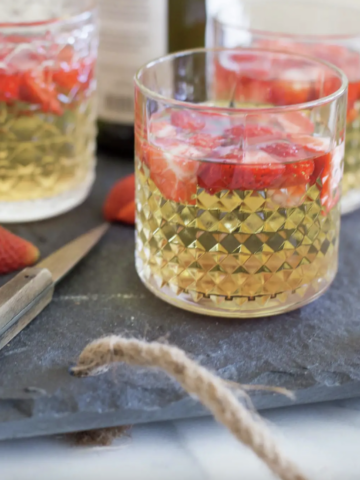
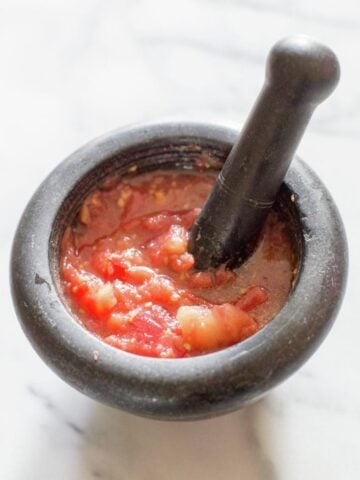

Marcela Arenas says
Hola Pilar
Que otro tipo de “squash” se puede usar en Estados Unidos, el acorn squash servirá?
Pilar Hernandez says
Casi todos los de invierno sirven, pero prefiero usar de tarro porque así sabes mejor cuanta harina vas a necesitar. Hay que saber cual es la textura correcta final de la masa.
En cuanto al sabor tienen diferente sabor, en mi casa son mañosos y no les gustan los otros zapallos, pero eso es más personal.
Brooke says
I recently visited my college roommate who lives in Santiago and fell in love with these. Is it possible to prepare them using an air fryer? Thanks!
Pilar Hernandez says
Hi Brooke,
I don't recommend it, they taste different in my opinion.
I think you could re-heat them in the air fryer.
Mari says
Hola Pilar, pregunta tú crees que se pueda intercambiar la harina con harina sin gluten?
Pilar Hernandez says
No sé, no tengo experiencia de primera mano con harinas sin glutén. He escuchado que la King Arthur es especialmente buena y resulta casi todo. Cuéntame si pruebas.
Elissa says
Hola si las quiero hacer al horno, cuánto tiempo las tengo que dejar y a qué Temperatura? Gracias 🙂
Pilar Hernandez says
No sé, no recomiendo hacerlas al horno.
Ana says
Yo las hago sin gluten y son excelente!,
Pilar Hernandez says
Que bueno Ana. Saludos.
Soledad says
Hola Pilar,
Soy chilena y vivo en Washington DC. Se pueden dejar cortadas las sopaipillas y freírlas al día siguiente o guardarlas fritas para el día siguiente?
Pilar Hernandez says
No lo recomiendo porque tienen polvos de hornear y van a quedar menos esponjosas. El polvo de hornear se activa con la humedad y se va a casi desvanecer de un día para otro.
Marcela Arenas says
Hola Pilar, dices que en USA podría reemplazar nuestra querida chancaca por melada, me podrías contar cómo preparar la salsa con ella? Cantidades?
Soy una chilena que recientemente me vine a vivir a Kansas
Gracias,
Marcela
Pilar Hernandez says
La melaza es de sabor más intenso, te recomiendo preparar una salsa de con 2 tazas de agua y 1 de azucar, por ejemplo con la naranja y las otras especies como dice la receta. Agregarle melaza de a cucharadas y vas probando y también le agregas la maicena a gusto.
Jessica Souder says
Hi Pilar,
I just found your website and I am very excited to try some of your recipes. I live in the United States, but at this time my husband and I are living in Santiago, Chile for five months while he teaches one semester at a local University. We are enjoying Chile very much!
I have a question, what type of oil do you recommend for frying your sopaipillas?
Thank you for sharing all your wonderful recipes!
Jessica
Pilar Hernandez says
Hi Jessica. Welcome to the blog.
For frying, I used grapeseed oil (pepita de uva en Chile) or Sunflower (Maravilla).
Good luck, and let me know if you have any other questions.
Pilar